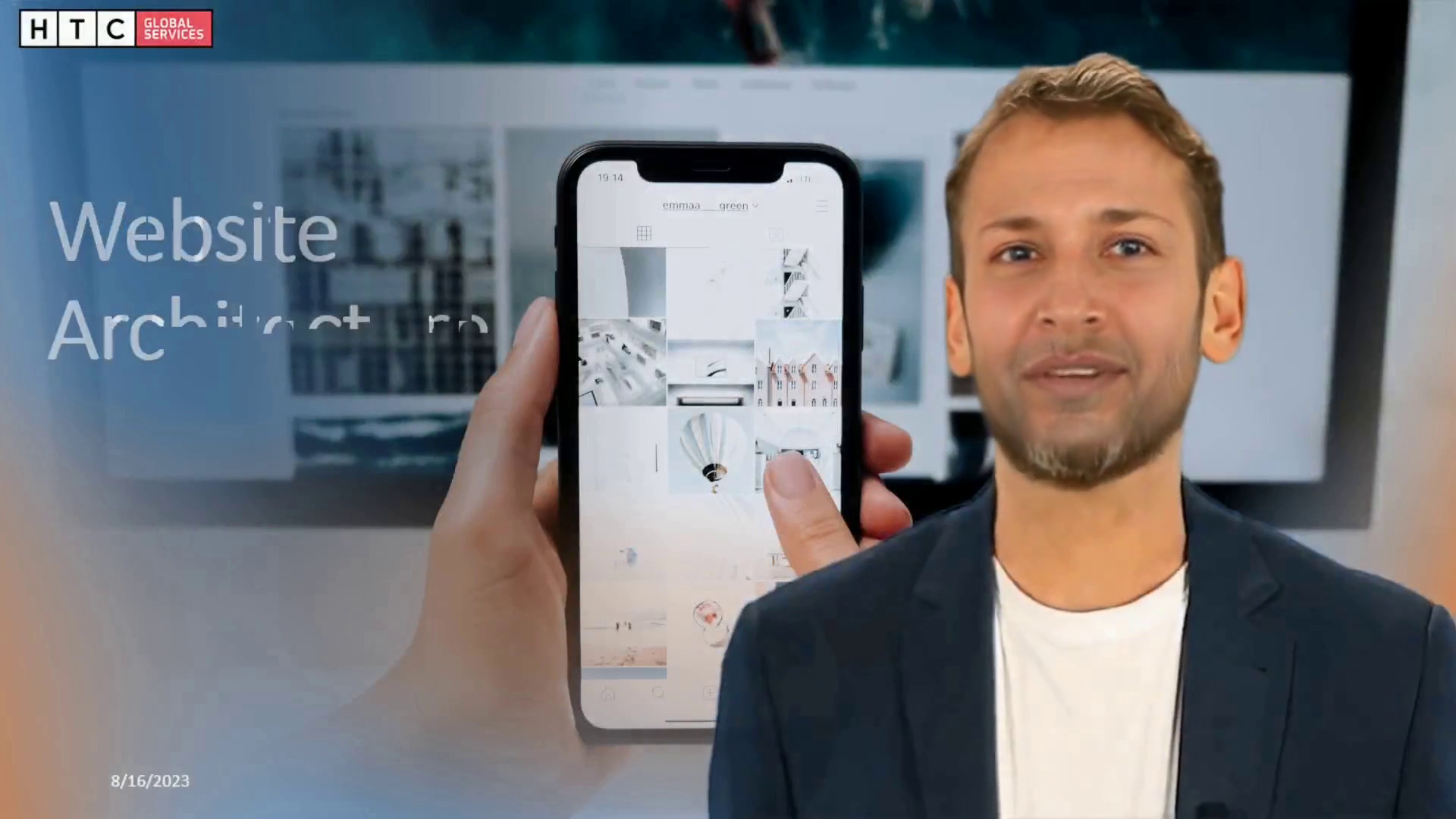
Page 1 (0s)
[Virtual Presenter] Hi, HTC Global Services welcomes to the incredible Website Architecture session.
Page 2 (8s)
[Virtual Presenter] Website Architecture encompasses various elements that work together to create a functional and user-friendly online platform..
Page 3 (19s)
[Virtual Presenter] User Interface (UI): This is the visual and interactive part of the website that users interact with directly. It includes layout, design, menus, buttons, and other elements that users see and use. User Experience (UX): UX focuses on ensuring that users have a positive and smooth experience while navigating the website. It involves optimizing the UI for ease of use, accessibility, and responsiveness across different devices. HTML (Hypertext Markup Language): The foundation of any web page, HTML structures content using tags and elements. CSS (Cascading Style Sheets): CSS is used to control the presentation and layout of HTML elements, ensuring a consistent and visually appealing design. JavaScript: This programming language adds interactivity to web pages. It allows you to create dynamic elements, handle user actions, and update content without needing to reload the entire page..
Page 4 (1m 29s)
[Virtual Presenter] Server: The server handles requests from the client (browser), processes data, and sends responses back. It stores and retrieves information from databases, performs calculations, and manages user authentication. Databases: Websites often rely on databases to store and manage data. SQL databases like MySQL and NoSQL databases like MongoDB are commonly used to store user information, content, and other data. Server-Side Scripting Languages: Languages like Python (Django, Flask), Ruby (Ruby on Rails), PHP, and Node.js are used to develop the logic that processes user input, interacts with databases, and generates dynamic content..
Page 5 (2m 23s)
[Virtual Presenter] Middleware components connect the front-end and back-end, facilitating communication between different layers of the architecture..
Page 6 (2m 38s)
[Virtual Presenter] A website needs to be hosted on a server that makes it accessible on the internet. Hosting options include shared hosting, virtual private servers (VPS), and cloud-based services. Deployment involves uploading your website's files and databases to the server, configuring server settings, and ensuring the website is accessible to users..
Page 7 (3m 3s)
[Virtual Presenter] Website architecture also involves implementing security measures such as encryption, user authentication, and authorization to protect user data. Performance optimization techniques, like caching, content delivery networks (CDNs), and efficient database queries, help improve the speed and responsiveness of the website..
Page 8 (3m 26s)
[Virtual Presenter] A CMS like WordPress, Drupal, or Joomla simplifies content creation and management, enabling non-technical users to update and publish content without coding knowledge..
Page 9 (3m 39s)
Thank you. Let’s Create Engaging User Experiences.